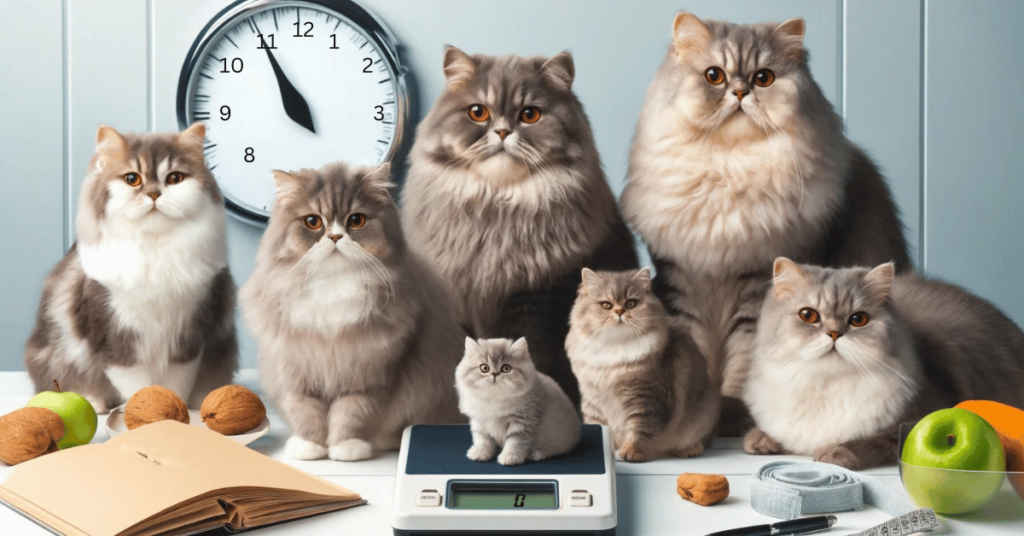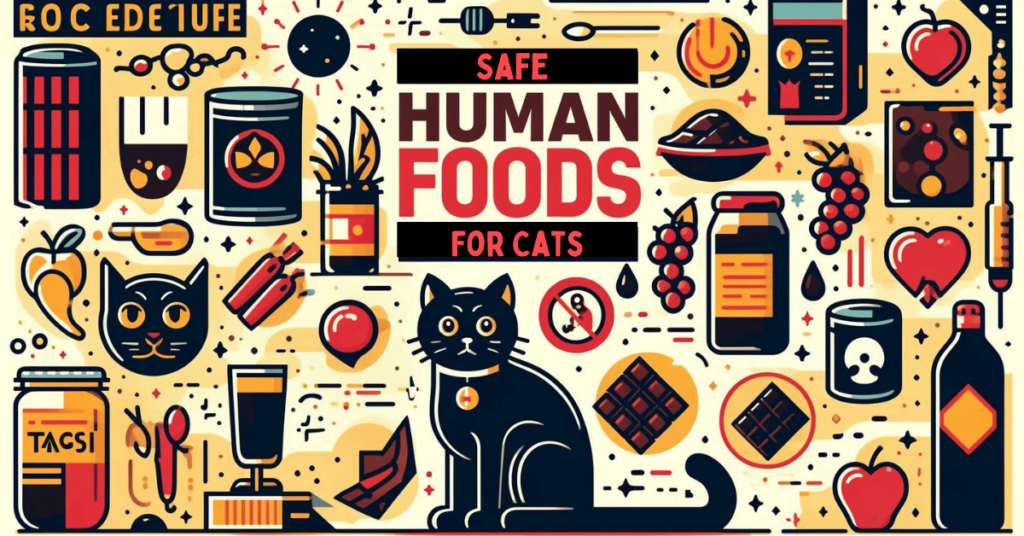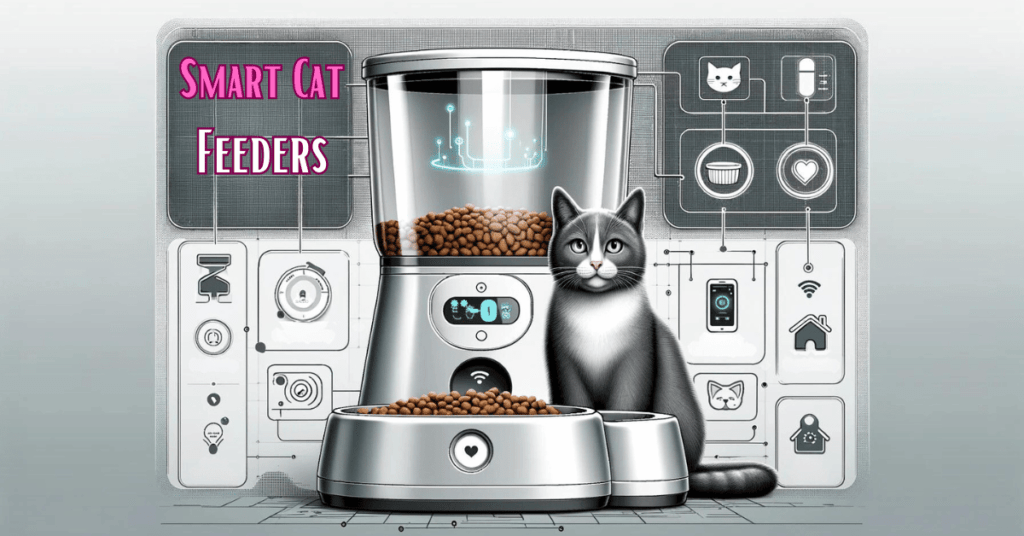This post contains affiliate links and I will be compensated if you make a purchase after clicking on my links.
Introduction: Nurturing Your Persian Kitten with the Perfect Diet
When it comes to raising a Persian kitten, understanding and implementing the right feeding schedule is as crucial as choosing the coziest bed or the most entertaining toys. Your kitten’s health, growth, and overall well-being are significantly influenced by what and when they eat.
This guide delves deeply into the world of Persian kitten nutrition, highlighting not only how many times to feed a Persian kitten but also illuminating what to feed them to ensure optimal health.
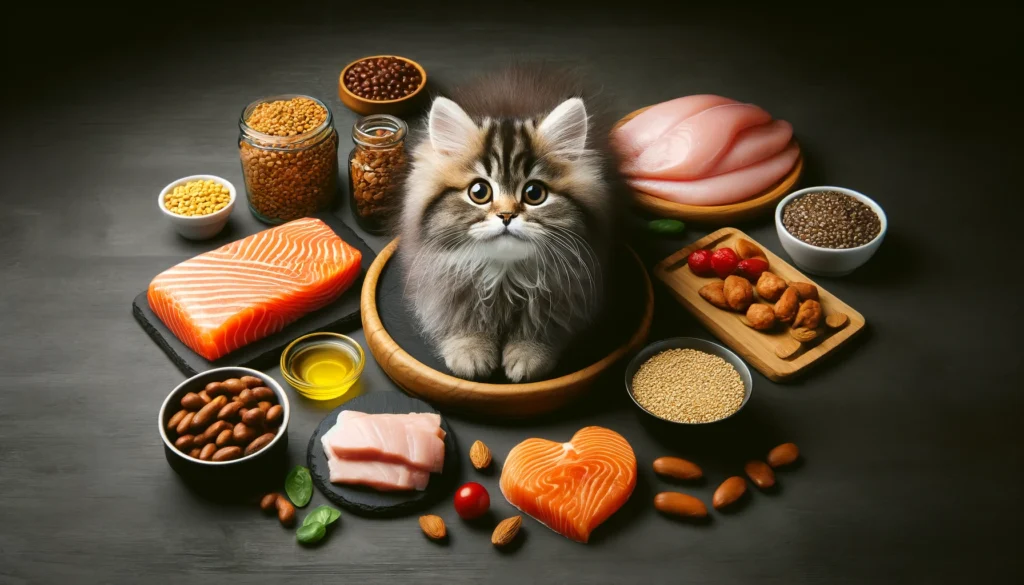
Understanding Persian Kitten Nutritional Needs
Why Persian Kittens Have Specific Dietary Requirements
Persian kittens have unique nutritional needs that set them apart from their feline counterparts. Their long, dense fur, for example, requires a diet rich in omega-3 and omega-6 fatty acids to stay lustrous and healthy.
Additionally, their distinctive facial structure means they need easily chewable or digestible food to prevent any feeding difficulties.
The Importance of Balanced Nutrition
A balanced diet for a Persian kitten includes a mix of proteins, fats, vitamins, and minerals, supporting everything from their playful energy to their bone development.
High-quality protein sources like chicken, turkey, or fish help build strong muscles, while the right balance of calcium and phosphorus ensures robust bones and teeth. Vitamins A, C, and E, along with antioxidants, protect their immune system, keeping them primed for exploration and adventure.
How Diet Affects Growth, Health, and Behavior
Nutritional imbalances or deficiencies can lead to growth issues, compromised immunity, and even affect their behavior. Well-nourished kittens are more likely to be lively, playful, and curious, ready to engage with the world around them.
How Many Times to Feed a Persian Kitten
Feeding Frequency by Age
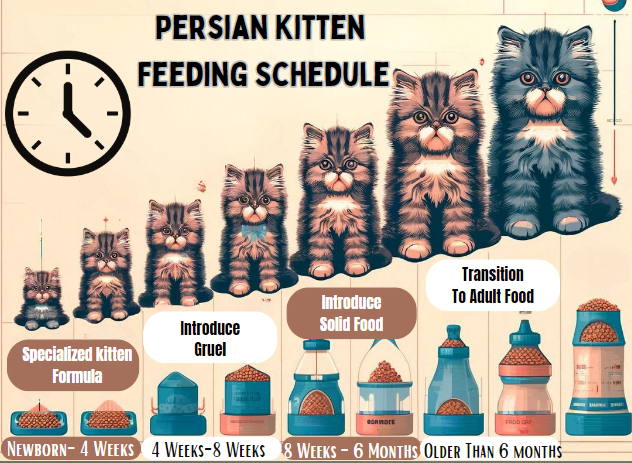
Newborn to 4 Weeks: Mother’s Milk/Formula Is Key
In the initial weeks of life, a Persian kitten’s diet isn’t just about sustenance—it’s about building immunity. The ideal nutrition comes from the mother’s milk, rich in antibodies and perfectly balanced for a kitten’s developmental needs. If the mother isn’t present or unable to nurse, it’s crucial to substitute this with a high-quality kitten milk replacer, not cow’s milk, which can cause digestive distress.
Feeding should be on-demand, typically every 2-3 hours, including overnight, mimicking the natural feeding frequency they would get from their mother.
4 to 8 Weeks: Gradual Introduction to Solid Food
Around the fourth week, it’s time to introduce the concept of solid food. This doesn’t mean a sudden switch but a gradual introduction. Begin with a gruel made by blending kitten milk replacer with high-quality wet kitten food.
Initially, offer this mix four to six times a day, letting them explore and taste at their own pace. This period is also when you’ll introduce a shallow bowl of water, encouraging them to start lapping liquids beyond milk.
8 Weeks to 6 Months: Establishing a Regular Feeding Schedule
As your Persian kitten becomes more accustomed to solid foods, their feeding frequency can be adjusted to three to four meals a day. This reduction in frequency helps accommodate their growing stomach capacity and the increased nutritional density of solid food.
Each meal should be a mix of wet and dry food to promote dental health and hydration. Consistent meal times help regulate their body’s clock, aiding in digestive health and overall well-being.
6 Months and Beyond: Transitioning to an Adult Cat Feeding Schedule
Reaching the six-month mark signals another adjustment phase. Growth rates begin to slow, meaning their caloric needs decrease. Transitioning to two meals a day mirrors the natural feeding behavior they would adopt as adults.
This is also the pivotal time to consult with a veterinarian about slowly transitioning to adult cat food, tailored to maintain optimal health as their nutritional requirements shift. This transition should be gradual, over a week or more, to prevent digestive upset.
Creating a Feeding Schedule
Setting Up a Feeding Schedule: Timing is Everything
Like clockwork, a consistent feeding schedule not only helps regulate your Persian kitten’s digestion but also establishes a comforting routine. Aim to feed them at the same times each day, creating a rhythm that syncs with their natural energy peaks and rest periods.
Morning and early evening tend to align well with their activity patterns, ensuring they have the energy for play and the nutrients needed for growth and repair during sleep.
Consistency and Monitoring Portion Sizes
Consistency is key—not just in timing but in portion sizes. Overfeeding can be just as detrimental as underfeeding, leading to weight issues and health complications down the line. Follow the feeding guidelines provided on your kitten food packaging, adjusting as needed based on your kitten’s growth and energy levels.
The Role of Water in Your Persian Kitten’s Diet
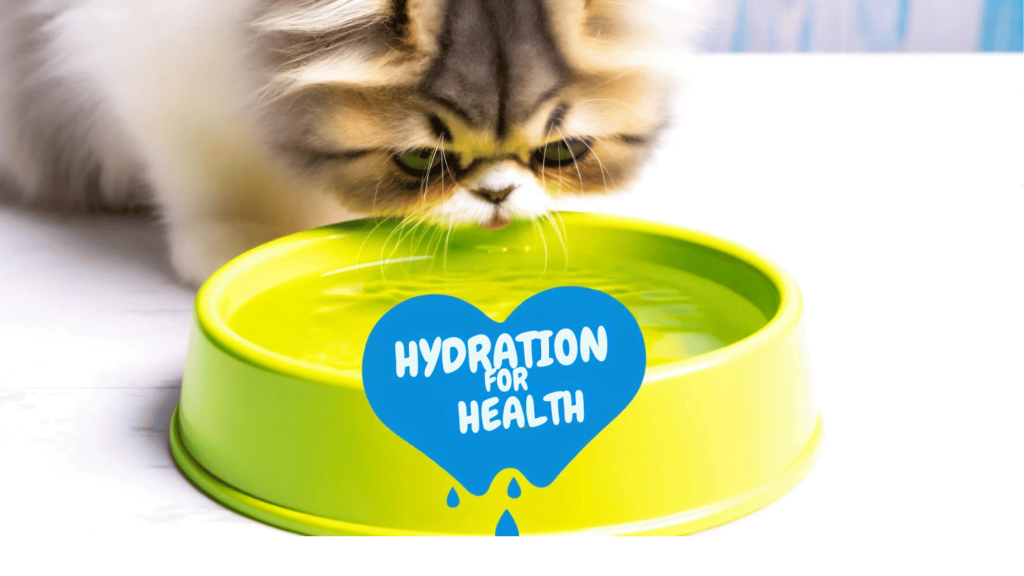
As kittens transition to solid foods around 4 to 8 weeks, introducing a shallow water bowl becomes essential. Water aids in digestion, helps flush out toxins, and supports overall health.
Encourage your kitten to drink by placing several water bowls around your home, and consider a pet water fountain to stimulate their interest in drinking. Monitoring your kitten’s water intake is vital, especially during dietary transitions when the risk of dehydration can increase.
What to Feed Your Persian Kitten?
Choosing the Right Food
Wet vs. Dry Food: Weighing the Options
Wet food, rich in moisture, can aid in hydration and is often more palatable to picky eaters. It’s also easier for younger kittens to consume. Dry food, on the other hand, is convenient and can help maintain dental health by reducing tartar buildup. Many experts recommend a balanced approach, incorporating both into your kitten’s diet to reap the benefits of each.
Navigating the Minefield: Foods to Avoid
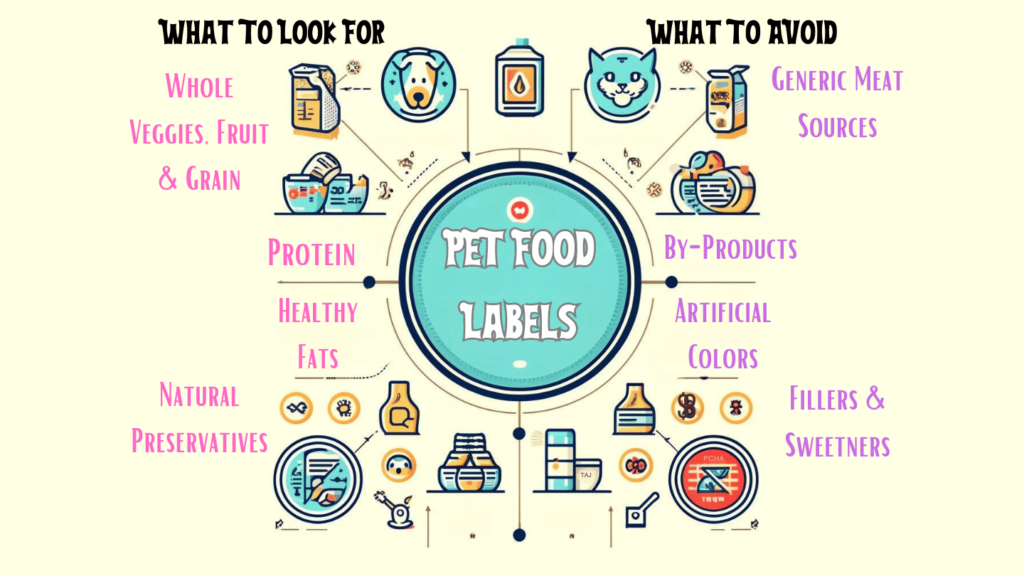
Learning to read and understand pet food labels can empower you to make healthier choices for your feline friend. Look for foods where high-quality protein sources, such as chicken, turkey, or fish, are listed as the first ingredient, ensuring your kitten is getting the building blocks they need for growth.
Be wary of vague terms like “meat by-products” and seek out products with specific, named protein sources. Additionally, check for a balance of essential nutrients—vitamins, minerals, and fatty acids—and avoid foods with excessive fillers, artificial colors, or preservatives.
Supplementing Your Kitten’s Diet
When Supplements Make Sense
While high-quality kitten food is designed to meet their nutritional needs, certain life stages, health conditions, or specific dietary requirements might necessitate the addition of supplements. Before integrating any supplements into your kitten’s regimen, it’s crucial to consult with your veterinarian to confirm their necessity and safety.
Here’s a brief overview of supplements that might be recommended for enhancing the optimal health of a Persian kitten:
- Probiotics: Beneficial for promoting a healthy gut, probiotics support digestive health and can enhance overall well-being by maintaining a balanced gut flora.
- Glucosamine and Chondroitin: For kittens, especially those of larger breeds or those at risk for joint issues, these supplements can help support the development of strong, healthy joints.
- Milk Thistle: Recognized for its liver-protecting properties, milk thistle can be a valuable supplement to support a kitten’s liver health.
- Taurine: An essential amino acid that’s crucial for heart and eye health. Taurine is particularly important for cats, as they cannot synthesize enough of it on their own.
- Coenzyme Q10: This nutrient plays a role in energy production within cells and supports overall health, making it a useful supplement for your kitten’s well-being.
- Lysine: Known to support immune health, lysine can be especially beneficial in maintaining respiratory health and may help manage feline herpes virus symptoms.
It’s important to remember that while these supplements can offer health benefits, they should not replace a well-balanced diet.
Homemade Food: A Labor of Love
Crafting homemade meals for your Persian kitten can be incredibly rewarding, offering complete control over their diet.
Start simple: a balanced blend of cooked, lean meats, and appropriate vegetables (sans onion and garlic, which are toxic to cats). Remember, homemade doesn’t mean human food—seasonings and cooked bones are off the table.
Common Feeding Issues and How to Address Them
Navigating the early stages of your Persian kitten’s diet isn’t without its challenges. From finding the perfect balance in portion sizes to understanding their unique dietary preferences, here’s how to address some common feeding issues.
Overfeeding and Underfeeding: Recognizing the Signs
- Signs of Overfeeding:
- Noticeable weight gain beyond growth expectations.
- Decreased activity levels or reluctance to engage in play.
- Signs of Underfeeding:
- Visible thinness or rib prominence.
- Lethargy and a general lack of interest in food or activities.
Solutions for Portion Control
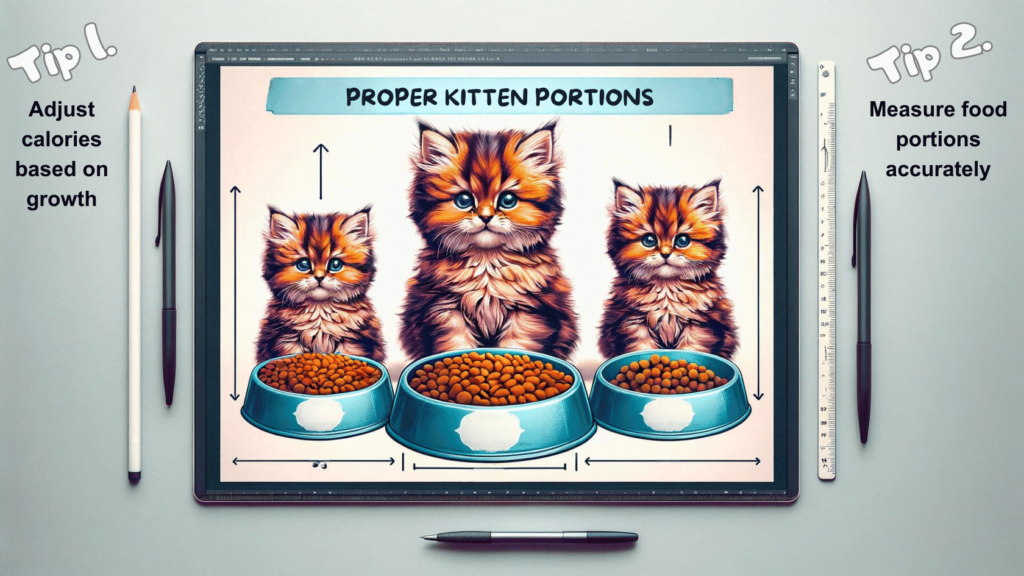
- Regular Monitoring: Schedule weekly weigh-ins to monitor your kitten’s growth progress. Adjust food portions according to changes in weight and activity levels. Utilize our calculator to fine-tune calorie intake accordingly.
- Accurate Measurement: Adhere strictly to meal portion guidelines provided by the kitten food manufacturer. Consider using a kitchen scale or a smart cat feeder.
When Your Kitten Isn’t Eating Enough: Tactics to Encourage Eating
- Stress-Free Environment: Ensure the feeding area is tranquil and safe, away from high foot traffic and noise.
- Diverse Menu Offerings: Experiment with different food types and flavors to identify your kitten’s preferences. Transition foods gradually to avoid digestive upset.
- Health Check: Persistent refusal to eat warrants a veterinary examination to exclude possible underlying health issues.
Conclusion: Mastering How Many Times to Feed a Persian Kitten
Feeding your Persian kitten is providing them with a foundation for a healthy, vibrant life. Be observant, flexible, and ready to adjust your approach based on their growth, health, and activity levels.
Above all, when in doubt, consult your veterinarian for personalized advice tailored to your kitten’s specific needs.
FAQs on Feeding Persian Kittens
Can I feed my Persian kitten adult cat food?
Kittens have different nutritional needs than adult cats, so it’s best to stick with food specifically formulated for kittens until they’re about one year old.
How can I tell if my Persian kitten is overeating?
Signs include rapid weight gain and a less playful demeanor. Monitoring portion sizes and regular vet check-ups can help manage their weight.
What’s the best type of food for my Persian kitten?
A combination of high-quality wet and dry kitten foods is often recommended to support their growth and hydration needs.
Meet Sean, a fintech whiz with a penchant for pet purrs and blockchain buzz. After a decade of fintech feats, Sean’s tech talents leaped from ledger lines to litter lines, driven by a passion for pets and a vision for a more connected pet care community. With three critter companions as co-pilots, Sean launched this blog to share a treasury of pet-friendly tech tips and tales.


